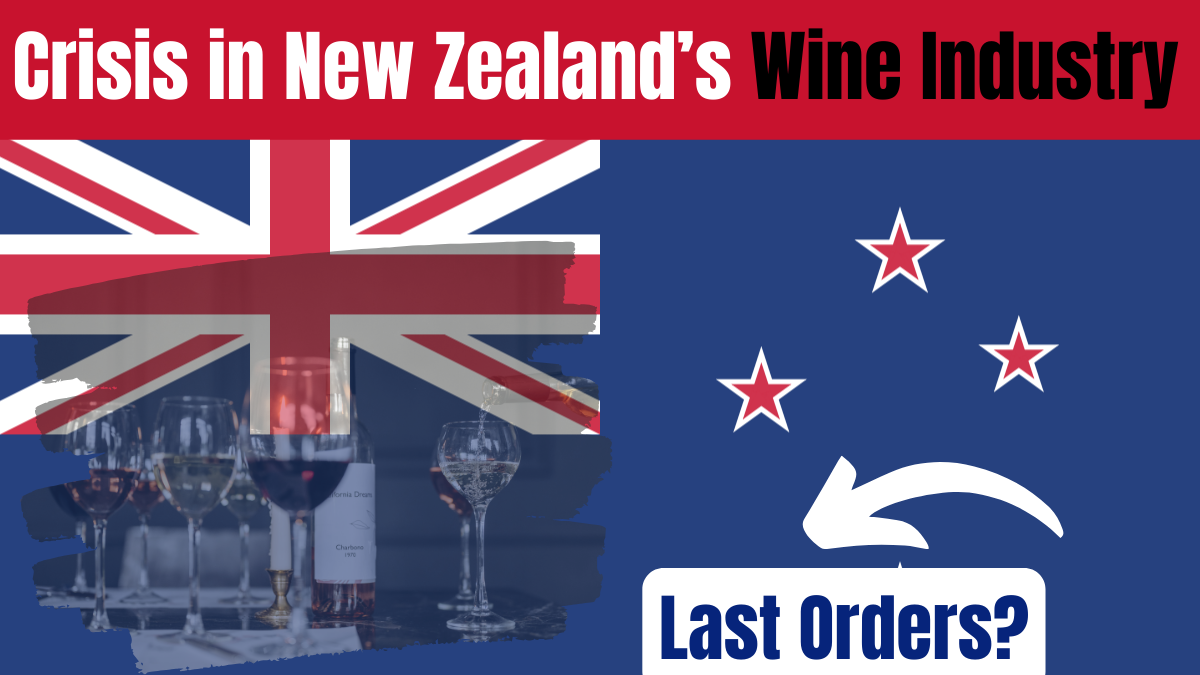New Zealand, once celebrated as the “France of the Southern Hemisphere” for its exceptional grape-growing climate, is now facing one of its most significant challenges in decades. The wine industry, which thrived on the country’s diverse climates and unique terroir, is battling a combination of economic pressures, climate unpredictability, and shifting consumer preferences.
In the early days, Kiwis embraced wine culture with enthusiasm, transforming regions like Marlborough, Hawke’s Bay, and Central Otago into world-renowned wine destinations. However, recent developments have turned that success story into a fight for survival.

What Factors Are Driving the Current Crisis?
The challenges affecting New Zealand’s wine industry stem from multiple interconnected issues. Here are the main factors contributing to the downturn:
- Climate Change Impact:
- Unpredictable weather patterns have disrupted grape harvests, with extreme temperature fluctuations and increased rainfall damaging crops.
- Rising Production Costs:
- Escalating costs of labor, packaging, and transportation have squeezed profit margins for many wineries.
- Global Competition:
- Competing markets, especially from Australia and South America, are offering wines at lower prices, putting pressure on New Zealand’s premium positioning.
- Changing Consumer Preferences:
- There is a noticeable shift toward lower-alcohol beverages and alternative drinks, impacting wine demand.
- Export Challenges:
- Fluctuating international shipping costs and trade barriers have made exporting more expensive and less reliable.
How Is the Crisis Affecting Vineyards and Winemakers?
The impact on vineyards and winemakers has been profound. Many smaller producers are struggling to stay afloat as larger corporations dominate the market.
| Challenge | Effect on Producers |
|---|---|
| Climate unpredictability | Lower grape yields and compromised quality |
| Rising operational costs | Profit margins shrinking, job cuts occurring |
| Global competition | Decreased export sales and market share loss |
| Consumer shifts | Lower domestic sales for premium wines |
Smaller, family-owned wineries are the hardest hit, with some forced to sell their properties or close operations.
What Efforts Are Being Made to Revive the Industry?
Despite the current challenges, efforts are underway to stabilize and revive New Zealand’s wine sector. These strategies include:
- Innovative Viticulture: Wineries are exploring drought-resistant grape varieties and investing in technology to manage climate challenges.
- Sustainability Initiatives: Producers are focusing on organic and sustainable farming to attract environmentally-conscious consumers.
- Market Diversification: Some winemakers are targeting emerging markets in Asia and North America to expand sales.
- Tourism and Wine Experiences: Vineyards are enhancing wine tourism experiences to boost local sales.
MUST READ: NZ Pension Increase for 2025 – New Rates, Payment Dates, Eligibility, and How to Apply
What Does the Future Hold for New Zealand’s Wine Industry?
While the challenges are significant, there is cautious optimism. New Zealand’s reputation for producing high-quality Sauvignon Blanc and Pinot Noir remains strong, and industry leaders are committed to adaptation and innovation.
Investments in research, climate resilience strategies, and consumer education may pave the way for a recovery. However, the industry’s future will largely depend on how quickly producers can adapt to these evolving conditions.
FAQs
What is causing the crisis in New Zealand’s wine industry?
The crisis stems from climate change, rising production costs, global competition, and shifting consumer preferences.
How has climate change impacted New Zealand’s vineyards?
Extreme weather conditions have led to unpredictable harvests, affecting both grape quantity and quality.
Why are production costs increasing for winemakers?
Labor shortages, packaging expenses, and higher transportation costs have raised overall production expenses.
Are consumer preferences affecting wine sales in New Zealand?
Yes, many consumers are shifting toward low-alcohol beverages, which has impacted traditional wine sales.
How are small wineries coping with the downturn?
Many smaller producers are struggling to stay profitable, with some closing or selling their vineyards.
What steps are being taken to revive the industry?
Winemakers are adopting sustainable farming, diversifying markets, and enhancing wine tourism experiences.
Can New Zealand’s wine industry recover from this crisis?
Recovery is possible through innovation, adaptation, and strong industry collaboration.
Which wine varieties are most affected by the downturn?
Sauvignon Blanc and Pinot Noir, two of New Zealand’s flagship varieties, have experienced notable production and sales declines.
Click here to know more.
Aanchal is a passionate writer with a keen interest in storytelling, content creation, and creative expression. She enjoys exploring diverse topics and crafting engaging narratives that captivate readers.
